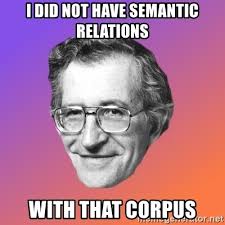PyTextRank
PyTextRank is a Python implementation of TextRank as a spaCy pipeline extension, for graph-based natural language work -- and related knowledge graph practices. This includes the family of textgraph algorithms:
- TextRank by [mihalcea04textrank]
- PositionRank by [florescuc17]
- Biased TextRank by [kazemi-etal-2020-biased]
- TopicRank by [bougouin-etal-2013-topicrank]
Popular use cases for this library include:
- phrase extraction: get the top-ranked phrases from a text document
- low-cost extractive summarization of a text document
- help infer concepts from unstructured text into more structured representation
See our full documentation at: https://derwen.ai/docs/ptr/
Getting Started
See the "Getting Started" section of the online documentation.
To install from PyPi:
python3 -m pip install pytextrank
python3 -m spacy download en_core_web_sm
If you work directly from this Git repo, be sure to install the dependencies as well:
python3 -m pip install -r requirements.txt
Alternatively, to install dependencies using conda:
conda env create -f environment.yml
conda activate pytextrank
Then to use the library with a simple use case:
import spacy
import pytextrank
# example text
text = "Compatibility of systems of linear constraints over the set of natural numbers. Criteria of compatibility of a system of linear Diophantine equations, strict inequations, and nonstrict inequations are considered. Upper bounds for components of a minimal set of solutions and algorithms of construction of minimal generating sets of solutions for all types of systems are given. These criteria and the corresponding algorithms for constructing a minimal supporting set of solutions can be used in solving all the considered types systems and systems of mixed types."
# load a spaCy model, depending on language, scale, etc.
nlp = spacy.load("en_core_web_sm")
# add PyTextRank to the spaCy pipeline
nlp.add_pipe("textrank")
doc = nlp(text)
# examine the top-ranked phrases in the document
for phrase in doc._.phrases:
print(phrase.text)
print(phrase.rank, phrase.count)
print(phrase.chunks)See the tutorial notebooks in the examples subdirectory for
sample code and patterns to use in integrating PyTextTank with
related libraries in Python:
https://derwen.ai/docs/ptr/tutorial/
Contributing Code
We welcome people getting involved as contributors to this open source project!
For detailed instructions please see: CONTRIBUTING.md
Build Instructions
Note: unless you are contributing code and updates, in most use cases won't need to build this package locally.Instead, simply install from PyPi or use Conda.
To set up the build environment locally, see the "Build Instructions" section of the online documentation.
Semantic Versioning
Generally speaking the major release number of PyTextRank
will track with the major release number of the associated spaCy
version.
See: CHANGELOG.md
License and Copyright
Source code for PyTextRank plus its logo, documentation, and examples have an MIT license which is succinct and simplifies use in commercial applications.
All materials herein are Copyright © 2016-2023 Derwen, Inc.
Attribution
Please use the following BibTeX entry for citing PyTextRank if you use it in your research or software:
@software{PyTextRank,
author = {Paco Nathan},
title = {{PyTextRank, a Python implementation of TextRank for phrase extraction and summarization of text documents}},
year = 2016,
publisher = {Derwen},
doi = {10.5281/zenodo.4637885},
url = {https://github.com/DerwenAI/pytextrank}
}Citations are helpful for the continued development and maintenance of this library. For example, see our citations listed on Google Scholar.
Kudos
Many thanks to our open source sponsors; and to our contributors: @ceteri, @louisguitton, @Ankush-Chander, @tomaarsen, @CaptXiong, @Lord-V15, @anna-droid-beep, @dvsrepo, @clabornd, @dayalstrub-cma, @kavorite, @0dB, @htmartin, @williamsmj, @mattkohl, @vanita5, @HarshGrandeur, @mnowotka, @kjam, @SaiThejeshwar, @laxatives, @dimmu, @JasonZhangzy1757, @jake-aft, @junchen1992, @shyamcody, @chikubee; also to @mihalcea who leads outstanding NLP research work, encouragement from the wonderful folks at Explosion who develop spaCy, plus general support from Derwen, Inc.






